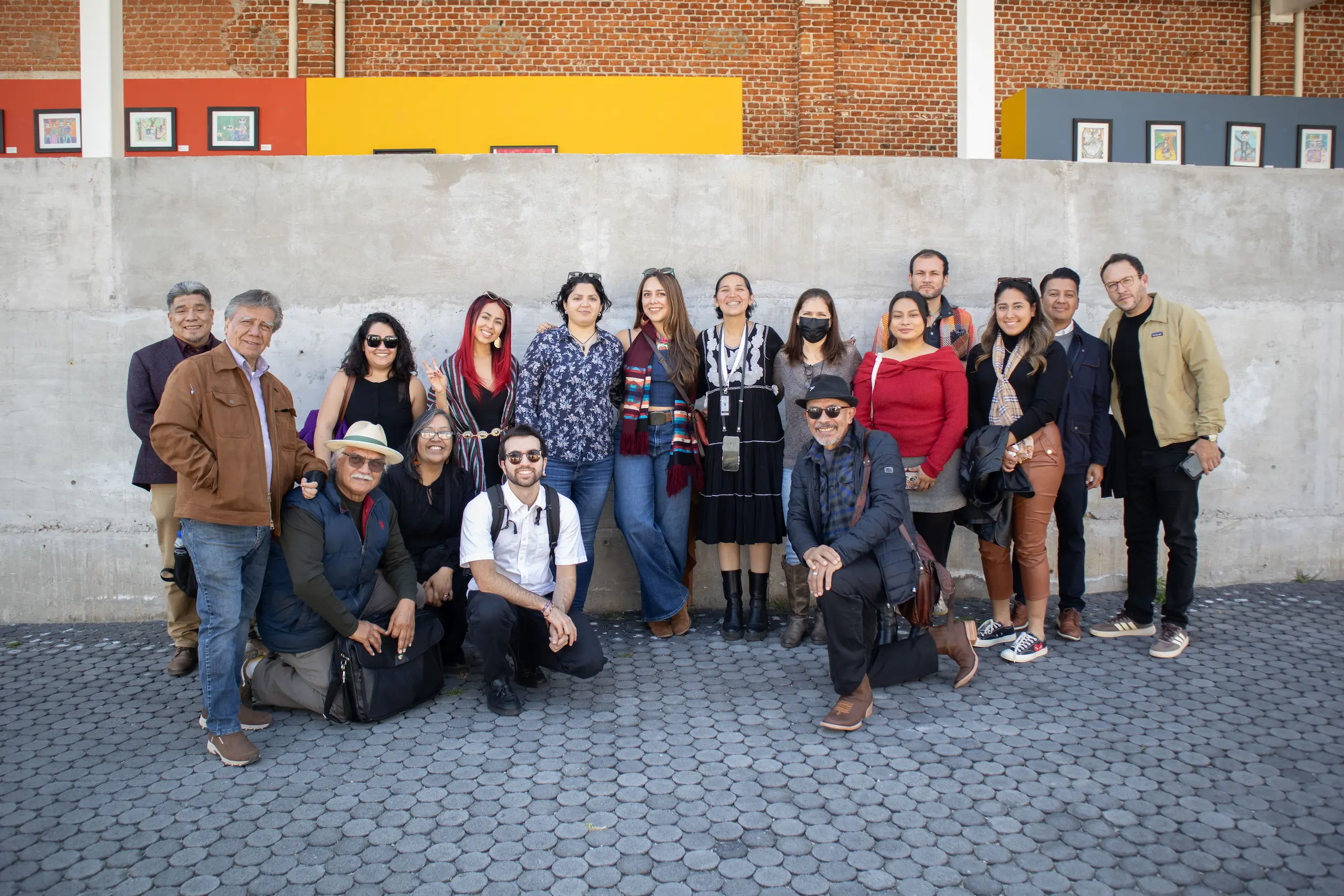
In a city that beats to the rhythm of murals, mariachi violins, and Chicano guitars, a group of binational artists gathered in Mexico City to do more than showcase their work: they came to build bridges.
Through the Puentes Creativos (Creative Bridges) program, promoted by the binational initiative ALMA, creators from different cultural fields explored how art can transform the relationship between Mexico and the United States and change the narrative around migrant communities.
“I have often felt that I am neither from here nor there, and one day I said: no, I am as much from here as from there; I belong to the world,” said Chicago-born singer-songwriter Rosalba Valdez, daughter of Michoacán migrants. Her bilingual, social justice–driven music speaks of her community and of the daily struggles of Mexican families in the United States.
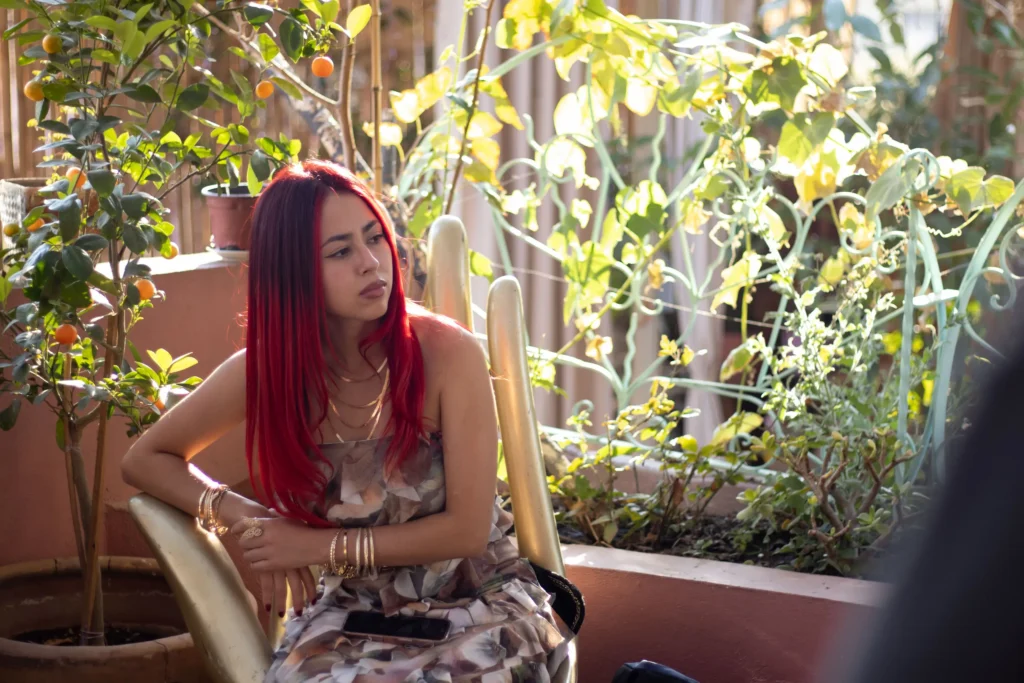
“My music is bilingual, it has different genres, because my identity is bicultural,” she explained, proud to bring her story to Mexico through Puentes Creativos. For her, visiting Mexico City is not just an invitation: it is a responsibility to “tell a story of resistance and empowerment” and to “humanize our people.”
ALMA: Culture to Change the Narrative
ALMA is a binational initiative dedicated to transforming the way the relationship between Mexico and the United States is understood. Guided by the motto “Connecting cultures, building a shared future for Mexico and the U.S.,” it seeks to open spaces for dialogue, representation, and advocacy to build a more just, balanced, and shared vision between the two countries.
In this effort, culture is a strategic tool. Through art, conversations emerge about belonging, memory, migration, social justice, and identity. This second technical visit by artists is part of ALMA’s ongoing work to strengthen cultural exchange and build sustainable ties between Mexican and Mexican-American communities on both sides of the border.
For three days, participants toured emblematic cultural venues in Mexico City, visited institutions and independent projects, met with artists and cultural directors, and shared their experiences in forums of collective reflection. All with a common goal, of recognizing that Mexican culture does not end at the border.
“Without migrants there is no culture, no food, no future”
From documentary film and immersive art, Nicolás Díaz Magaloni, a Chicano born in Los Angeles and raised in Northern California, clearly sees the impact of his community in the United States.
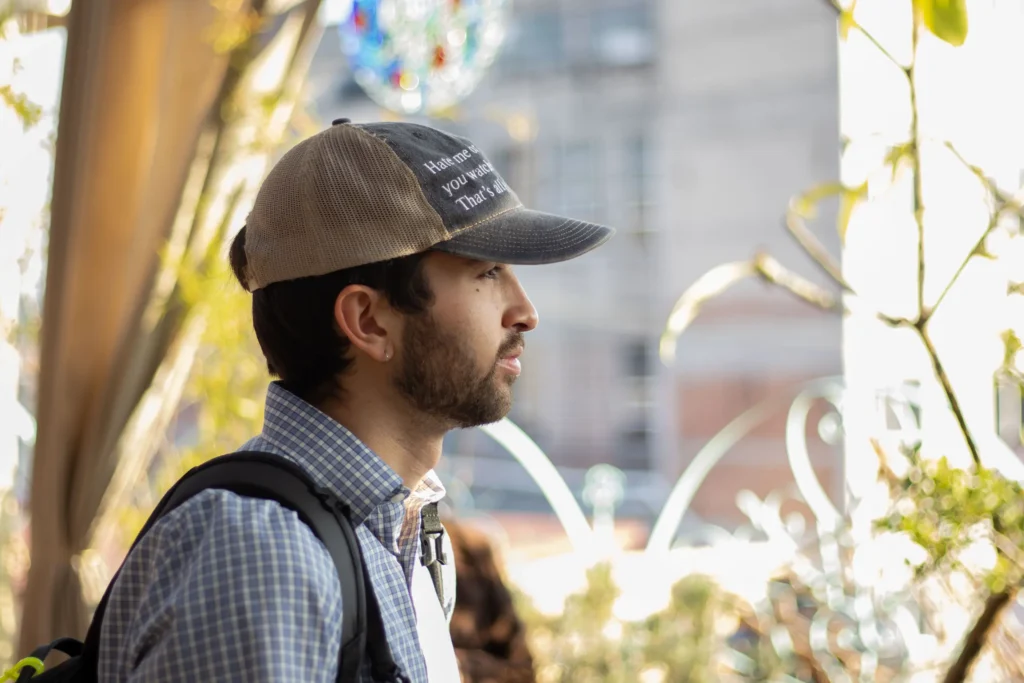
“Living in Los Angeles, there is no art or culture without Mexican and Latin American culture,” he said. Díaz recalls that without migrant labor, “there is no food in the United States; California could not sustain its infrastructure.”
The murals of the Central Valley, East Los Angeles, Chicano cinema, and the new generations of artists are, he said, living proof that Latinx and Chicano culture is everywhere.
For Díaz, programs such as ALMA and Puentes Creativos are key to shifting the narrative. “Culture has no borders. We are Mexican, even if we live in the United States, and it is important that Mexico also sees us and recognizes us as part of this story,” he explained.
Music, Memory, and Pride: From Chicago to New York
The impact of this binational identity is felt in every accent and every string. Ingrid Gachupín, a mariachi violinist born in Manhattan to parents from Puebla and Mexico City, found in traditional music a bridge to her roots.
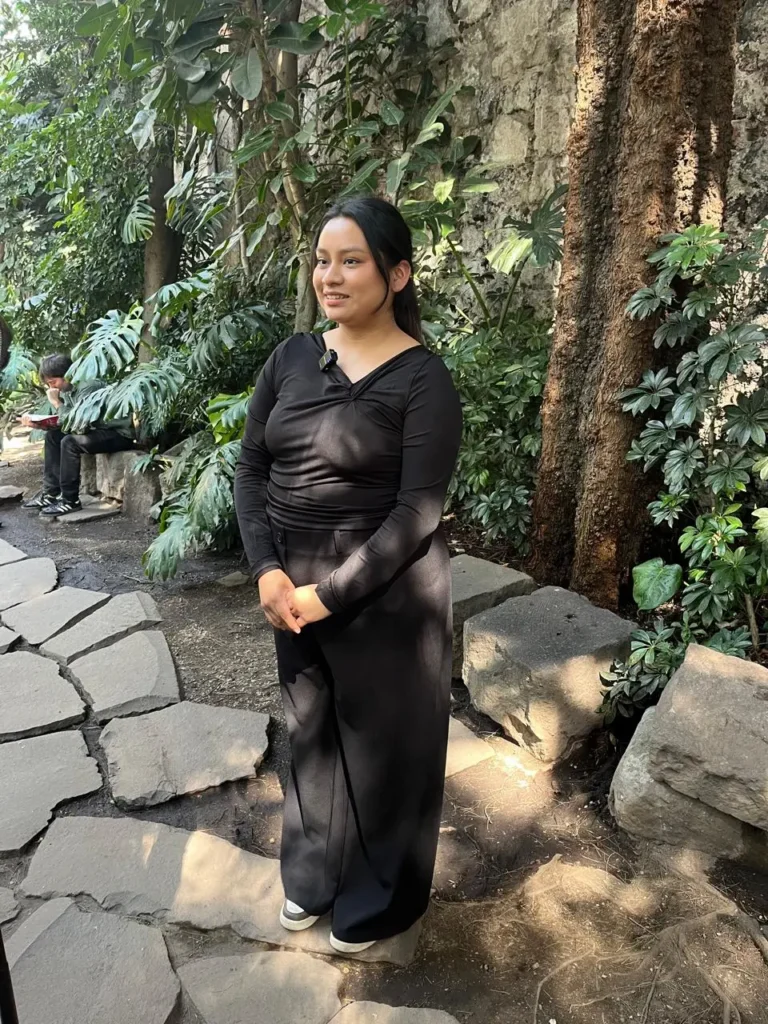
“Mariachi made me feel more connected to my family and their roots,” she said. “Without mariachi I would never have been interested in the music my parents listened to. It taught me the beauty of our traditions.”
Participating in Puentes Creativos, Gapuchín said, has been inspiring. She returns to New York with new knowledge she hopes to share with her peers. To those who dream of living a binational artistic life, she offers a simple but powerful piece of advice: “Don’t be afraid. Take advantage of every opportunity, big or small. Don’t say no without trying.”
From the Neighborhood to the Mural, From the NGO to the Collective
The cultural bridge is not constructed only in big cities. It is also born in rural areas and agricultural fields. From California’s Central Valley, visual artist Gabriela Santos—originally from Mexico City and daughter of Oaxacan migrants—combines her work in a migrant-support NGO with community art workshops, parades, Day of the Dead altars, and cultural preservation projects.

Her organization, Hola Raza, promotes activities to preserve Mexican traditions far from home. These range from parade floats for Cinco de Mayo to posadas and altars that show Mexico’s diversity and the many ways to celebrate life and death. She is also part of the Mexican Folk Art Collective, which brings together Mexican and Mexican American artists and artisans living in the U.S. with creators based in Mexico.
“Seeing the country from the outside is very different,” she said. “You reconfigure yourself, you become more rooted in symbols, and you understand the importance of identity. Art becomes a form of resistance—to prevent our culture from turning into just a ‘Hollywoodized’ version.”
Chicano Voices: History, Radio, and Dignity
The visit also brought together figures with long trajectories in the Chicano movement. Julio César Guerrero recalled how his family was affected by the repatriation programs of Mexicans in the U.S. during the 20th century and how, through the civil rights movement, a political Chicano identity emerged to fight discrimination and exclusion.
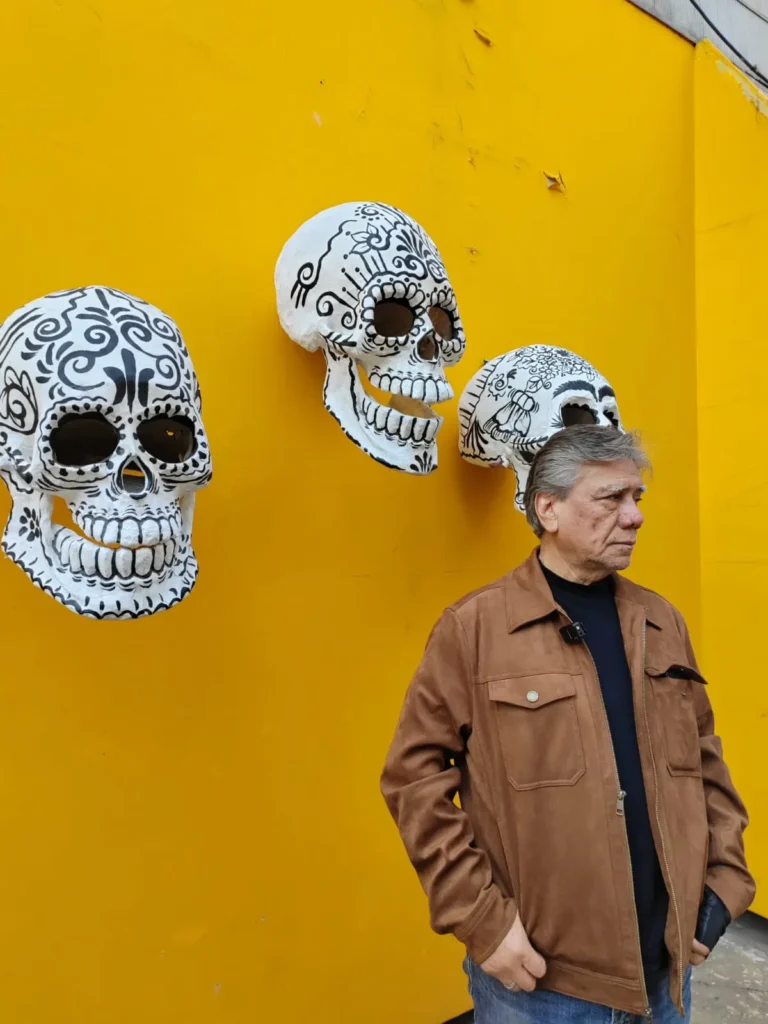
For decades he worked as a journalist and community organizer, co-founding community radio stations and creating the first national Chicano newscast in the United States. His goal was for Latino neighborhoods to hear news about their own struggles, not only what was happening in Europe or elsewhere.
“Art and alternative media have been our way of telling our story and resisting,” Guerrero explained. From Revolutionary-era corridos to Chicano muralism, art, he said, “is an open-air public school” where the barrio learns about itself.
Murals, Migration, and Hope
Another voice present was that of muralist Cornelio Campos, originally from Cherán, Michoacán, and living in North Carolina. He migrated first to Los Angeles and later to the southeastern United States as a farmworker. From those experiences arose his artistic work, which address migration, labor exploitation, cultural clashes, and hope.
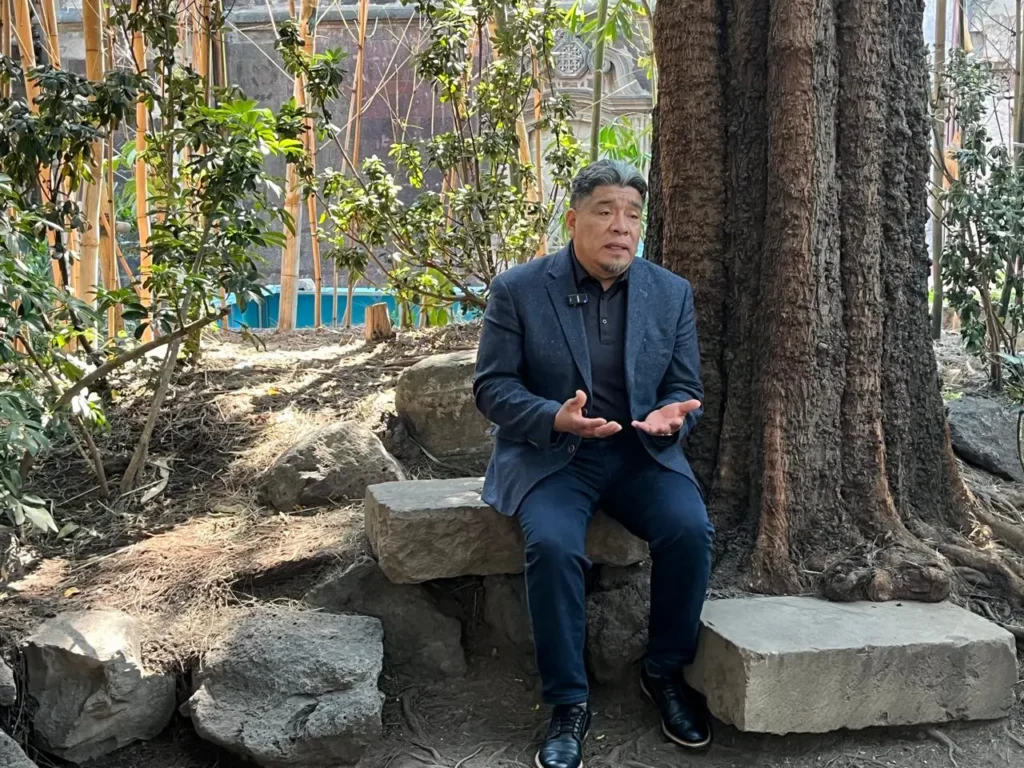
“My art started almost as therapy,” Campos emphasized. But it soon became a global narrative with which migrants from Latin America, Africa, and Europe identify. That is why he avoids limiting his work to a single flag, He wants to speak about the human experience of crossing borders.
For Campos, Puentes Creativos represents “one more step” in building connections, learning from the processes that already exist in Mexico, and sharing tools with young people who dream of becoming artists. His message is clear: “Be insistent and persistent. Don’t give up your dreams. I arrived as a farmworker and today I make a living from my art. That is possible too.”
Bolero, Identity, and Resistance in a Chicano Key
Bolero singer Enrique Ramírez grew up between Texas and Torreón, in a family where music became a refuge from an early age. When he migrated to the United States, he faced discrimination and cultural clashes; however, the Chicano movement helped restore his pride and identity. “Thanks to the Chicano movement, I was able to recover my culture and my pride,” he recalled.
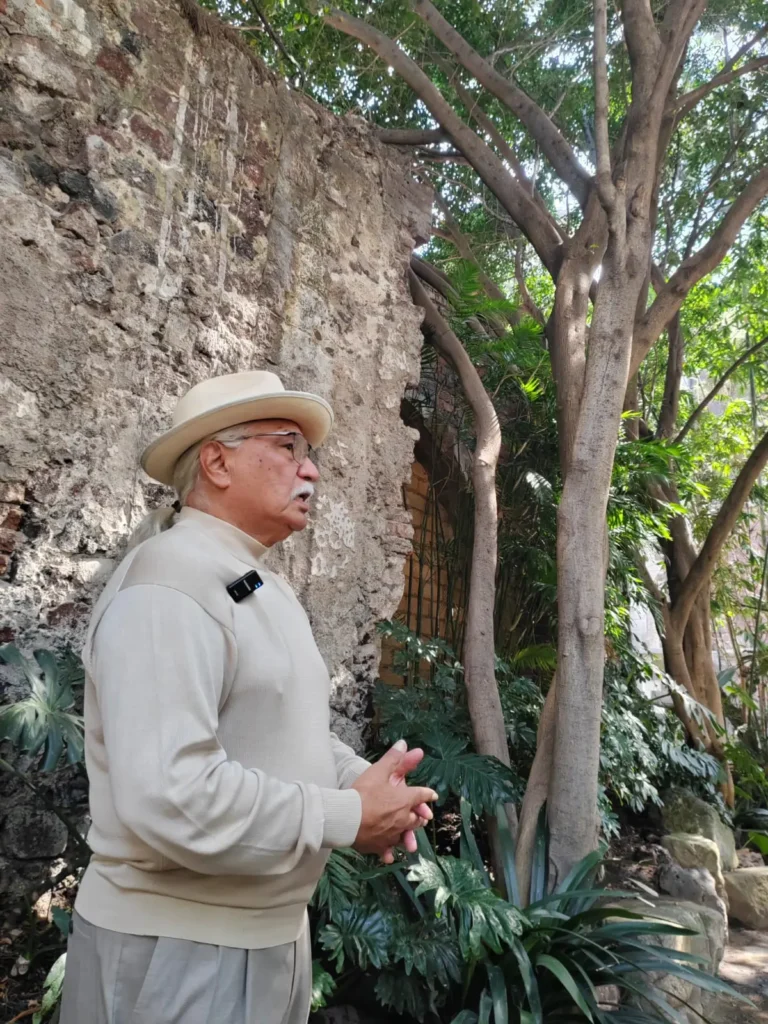
For Ramírez, being Chicano is a historical continuity that connects his community to Aztlán. With his group Los Peludos, he dedicates his music to promoting unity, roots, and hope, and he is already working on his second album, always with the same commitment: for his art to be a bridge.
As a binational artist, one of his biggest obstacles has been gaining access to broadcasting and cultural spaces in the United States. Even so, his bilingual approach has allowed him to carry messages of solidarity to a Latino community that, he says, “is no small thing anymore.”
His participation in ALMA opened new tools and connections with Chicano artists. To young creators, he offers direct advice: to know themselves, work with discipline, and never let go of their goals. “Life is short… You have to put in time and work,” he said.
A Shared Future
From Chicago to New York, from Los Angeles to the Central Valley, from Texas to North Carolina, the stories of these artists show that Mexican and Mexican American culture is reshaping the cultural map of North America. Their work engages with themes such as migration, identity, memory, social justice, belonging, and community.
With initiatives like ALMA and its Puentes Creativos program, these efforts cease to be dispersed and begin to form a binational network of collaboration, where artists, collectives, cultural institutions, and social organizations recognize and support one another.
Culture, they remind us, does not recognize walls or customs checkpoints. It travels in guitars, violins, murals, poems, and documentaries. And at every step it makes something clear—something often denied: Mexican and Mexican-origin communities are not a burden we carry, but an essential creative force for the present and future of both countries.
Related: Flowers, Music and Millions of Souls: Mexico City Comes Alive for Día de Muertos 2025
Mexican Press Agency is part of ALMA, which is dedicated to news and information about Mexico and Mexicans in the United States and is a fiscally sponsored project of Social Focus, a 501(c)(3) nonprofit organization based in Redwood City, California.